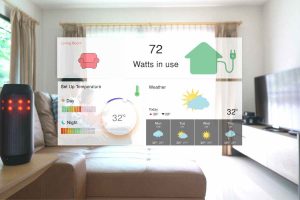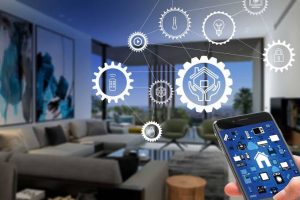In an era driven by technological innovation, the convergence of smart devices and home automation solutions has revolutionized the very essence of convenience within our living spaces. Home automation solutions, empowered by cutting-edge technology, have emerged as the epitome of seamless integration, transforming houses into intelligent, responsive environments that cater to our needs effortlessly.
Understanding Home Automation Solutions
Home automation solutions encompass a myriad of interconnected devices and systems designed to simplify and enhance various aspects of home management. These solutions leverage technology to automate tasks, providing control and connectivity across diverse home functionalities.
The Essence of Convenience
At the heart of home automation lies the pursuit of convenience. Picture a home where lights adjust automatically as natural light changes, temperatures regulate themselves to your preferred settings, and entertainment systems synchronize seamlessly with your preferences—all orchestrated without manual intervention.
Key Components of Home Automation
- Connected Devices: From smart thermostats and lighting systems to security cameras and smart locks, a plethora of devices forms the backbone of home automation. These devices communicate and collaborate, creating a unified ecosystem.
- Automation and Control Systems: Automated systems, controlled through centralized hubs or smartphone apps, streamline home management. They enable users to program routines, set preferences, and control devices remotely.
- Integration of AI and Machine Learning: The infusion of artificial intelligence and machine learning enables these systems to learn and adapt to user behavior. They anticipate needs, making adjustments based on patterns and preferences.
Benefits Beyond Convenience
The benefits of home automation extend beyond mere convenience:
- Energy Efficiency: Automated systems optimize energy usage, reducing waste and contributing to a more sustainable lifestyle.
- Enhanced Security: Smart security systems offer real-time monitoring, alerts, and remote access, fortifying home security measures.
- Personalization and Adaptability: These solutions offer personalized experiences, adapting to individual preferences and routines.
Overcoming Challenges
Despite the remarkable advantages, challenges persist. Compatibility issues among devices from different manufacturers and concerns regarding data privacy and cybersecurity need to be addressed. Establishing industry standards and robust security measures is crucial for widespread adoption.
Future Trajectory
The trajectory of home automation solutions is poised for continuous growth. Advancements in technology, coupled with increased consumer demand, will lead to more intuitive, interconnected, and user-friendly systems. Interoperability among devices and platforms will be pivotal in shaping the future landscape of home automation.
Conclusion
The integration of technology into home automation solutions represents a paradigm shift in how we manage and interact with our living spaces. By harnessing the power of technology, these solutions offer unparalleled convenience, efficiency, and personalization. As these innovations evolve, homes will continue to transform into intelligent, responsive environments that cater to our needs, ultimately enriching our lives in profound ways.














Add Comment